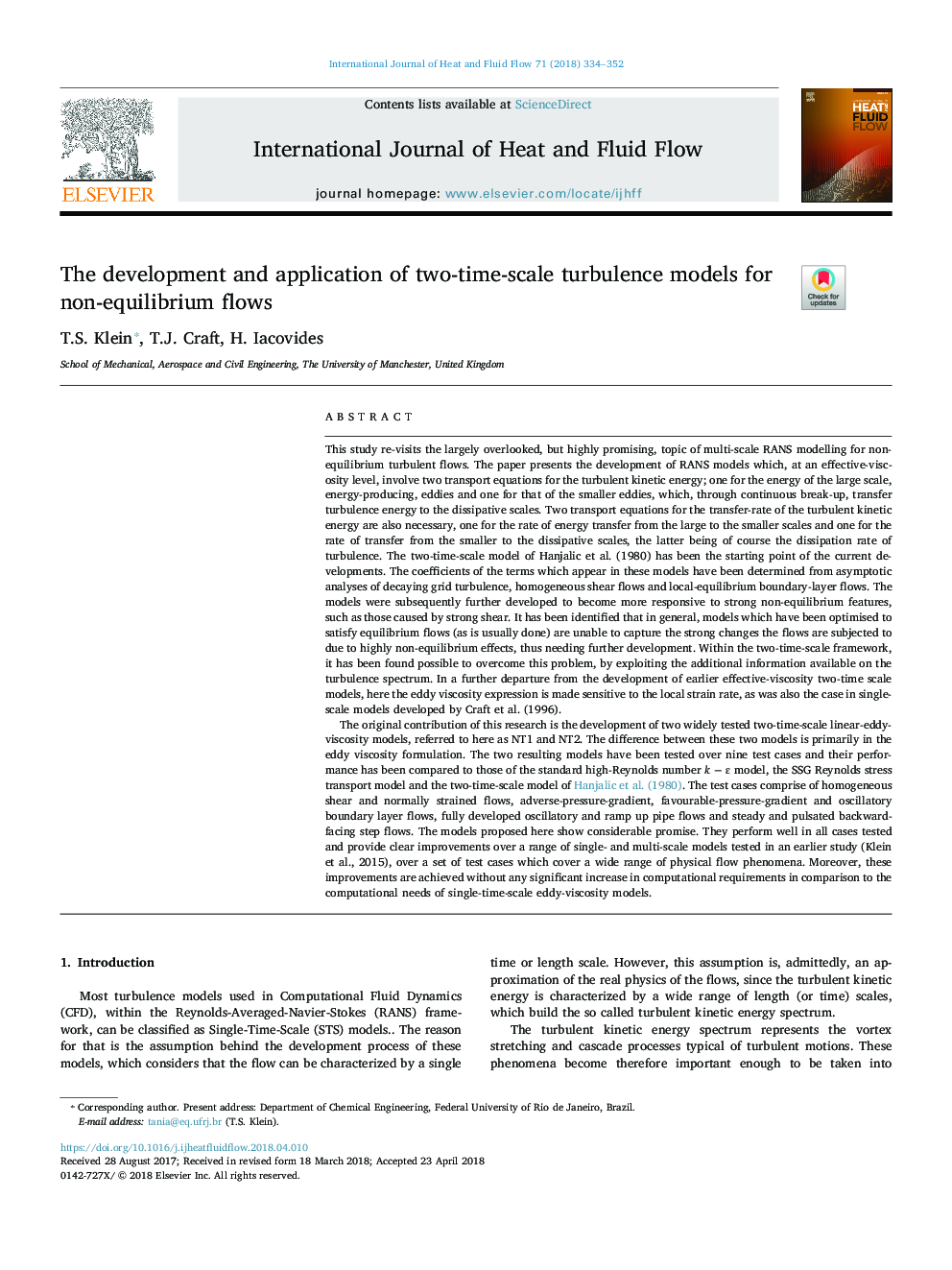| Article ID | Journal | Published Year | Pages | File Type |
|---|---|---|---|---|
| 7053464 | International Journal of Heat and Fluid Flow | 2018 | 19 Pages |
Abstract
The original contribution of this research is the development of two widely tested two-time-scale linear-eddy-viscosity models, referred to here as NT1 and NT2. The difference between these two models is primarily in the eddy viscosity formulation. The two resulting models have been tested over nine test cases and their performance has been compared to those of the standard high-Reynolds number kâÉ model, the SSG Reynolds stress transport model and the two-time-scale model of Hanjalic et al. (1980). The test cases comprise of homogeneous shear and normally strained flows, adverse-pressure-gradient, favourable-pressure-gradient and oscillatory boundary layer flows, fully developed oscillatory and ramp up pipe flows and steady and pulsated backward-facing step flows. The models proposed here show considerable promise. They perform well in all cases tested and provide clear improvements over a range of single- and multi-scale models tested in an earlier study (Klein et al., 2015), over a set of test cases which cover a wide range of physical flow phenomena. Moreover, these improvements are achieved without any significant increase in computational requirements in comparison to the computational needs of single-time-scale eddy-viscosity models.
Related Topics
Physical Sciences and Engineering
Chemical Engineering
Fluid Flow and Transfer Processes
Authors
T.S. Klein, T.J. Craft, H. Iacovides,
